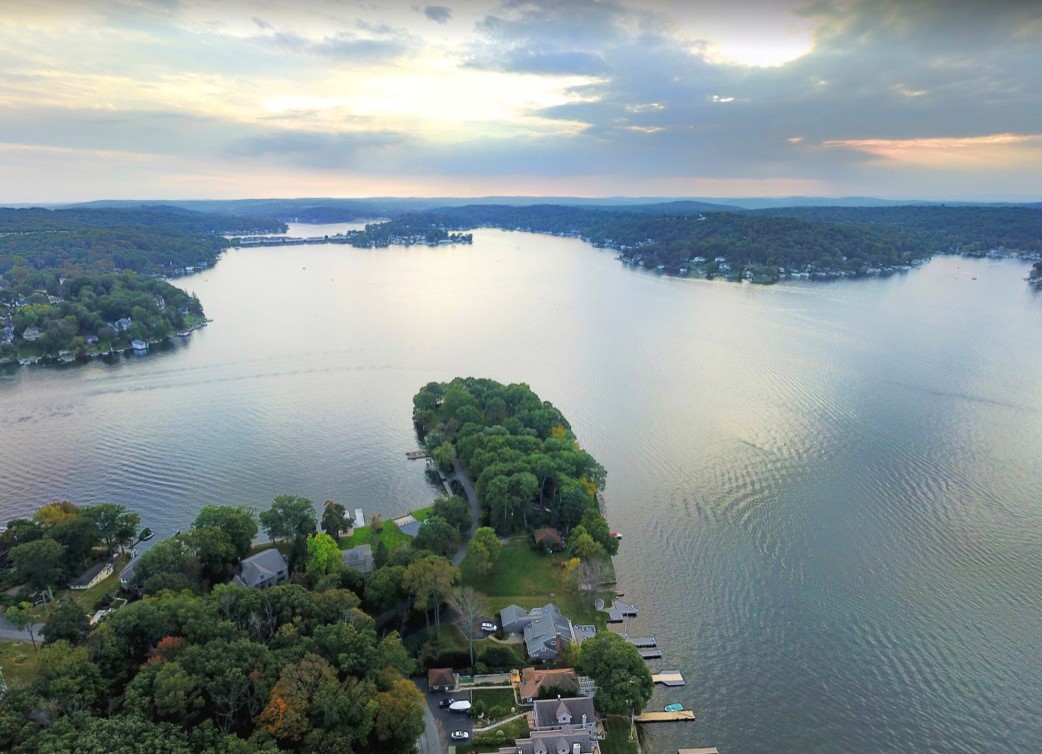
June 11, 2025| Environment
By: Donna Macalle-Holly
Lake Hopatcong is more than just New Jersey’s largest lake—it’s a major destination for recreation and a vital ecological and economic resource for our region. With nearly 2,600 acres of water and 45 miles of shoreline, it draws thousands of visitors every year.
But like many water bodies, Lake Hopatcong faces growing threats from aquatic invasive species (AIS). These non-native plants and animals can disrupt local ecosystems, clog waterways, and interfere with recreation. Once established, they are difficult and expensive to remove, which makes early detection critical.
To tackle this challenge, the Lake Hopatcong Foundation secured a grant through New Jersey Audubon’s Watershed and Community Empowerment Program. With that funding, we partnered with the environmental consulting firm Princeton Hydro to develop an Early Detection Aquatic Invasive Species Management Plan. The goal is to identify and prevent new AIS introductions before they spread.
Detecting invasive species early makes them much easier and less costly to manage. This approach, called Early Detection and Rapid Response (EDRR), helps protect Lake Hopatcong’s water quality, wildlife, and recreational value. It also supports the health of communities downstream along the Musconetcong River.
To build the plan, Princeton Hydro reviewed more than 30 studies to determine which monitoring tools would be most effective for Lake Hopatcong. The result is a clear strategy that outlines where and how often to survey, which species to watch for, and the potential costs involved.
The plan includes a mix of detection methods: newer technologies like drones, remote sensing, environmental DNA (eDNA), and artificial intelligence; citizen science programs that engage the public; and traditional tools such as boat inspections, vegetation surveys, and net sampling.
By using a combination of these methods, the plan aims to identify invasive species before they become a larger problem.
Several approaches show strong potential for early detection at Lake Hopatcong. The most effective include eDNA, citizen science, traditional plant and fishery surveys, and boat inspections supported by wash stations.
Among the newer tools, eDNA stands out for its high sensitivity and ease of use. Drones and artificial intelligence may offer future value for monitoring, but they currently face limitations in real-time detection due to complex data requirements.
Using both proven and emerging techniques gives the lake a stronger defense against invasive species.
Recreational lake users play an important role in preventing the spread of aquatic invasive species. One of the simplest and most effective ways to help is by following the Clean, Drain, Dry method. After using your boat, trailer, or gear, clean off any visible plants, animals, or mud. Drain all water from your equipment and let everything dry completely before launching into another waterbody.
These small actions can make a big difference in protecting Lake Hopatcong and other waterways.
With the plan now in place, our focus shifts to securing funding and partnerships to support implementation. By combining science, emerging technology, and community engagement, we’re taking a proactive approach to keeping Lake Hopatcong healthy and resilient for everyone who enjoys it, now and for generations to come.
Funding for the project is provided by the National Fish and Wildlife Foundation and the U.S. Fish & Wildlife Service. It is coordinated by the New Jersey Audubon Watershed Restoration and Community Empowerment Program. This grant program is designed to support projects throughout the Delaware River watershed.